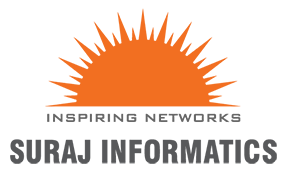TYPES OF AUTOMATION SERVICES
Suraj Informatics is a leading IT, telecommunication infrastructure services and solution company, and our major services that includes
Terminal automation systems
Terminal automation systems mainly function in the applications in truck/wagon fuel loading. The that fuels include the motor spirit (MS), diesel, aviation turbine fuel (ATF), superior kerosene oil (SKO), furnace oil, DHPP (diesel high point), liquefied petroleum gas (LPG), and other such chemicals. Terminal automation systems automate certain manual processes in a container terminal, that is especially in load recognitions, product movement (via multiple modes of transport), product measurement, documentation, and reporting. Terminal automation is flexible and open to integrating with other child systems and hardware, including meter skids, weight scales, tank gauging systems, and gives secure access to the control systems.
Container terminal automation system
Shipping containers are standard, container terminals are easier to automate than the other cargo terminals. That’s why almost all automated ports facilities are automated container terminals. In a container automated system, trucks or trains deliver containers to the yard. Special vehicles carry the containers to the stacks, where the cranes are arranged in a predetermined order. When the ship arrives, the stacking cranes move towards the containers from the stacks and then, the vehicles carry them to sea, then the gantry cranes lift those containers to the ship. This is a well-adjusted operation that keeps the entire network from delaying any part of the operation.
Port automation system
Port automation is the use of integrated technology that is to develop intelligent solutions for effectively managing port traffic and trade flows.
There are several areas for port automation such as
· Yard Management
Yard management includes the berth, stowage, yard, and labor plannings. Even for small terminals, stowage, and yard planning can be incredibly complicated. Mistakes in stacking and delivery or confusion about worker shifts can lead to delays. Computers have become better than humans at such planning situations, so the ports have been automating yard management since the 90s, and also making yard management the most advanced area of port automation.
· Port gate automation
Everything entering and leaving the port must pass through the gate. Safety, weights, customs, and immigration are crucial, but manual processes slow down. Automating these processes makes the system smoother and faster.
· Stacking cranes
Stacking cranes are stack containers in the yard. The yard has a controlled and unpredictable atmosphere, which makes it ideal for automation. And the most automated stacking cranes that are used lidar-based systems to place containers within the 50 mm of the intended positions. Their anti-collision system ensures that they will stop moving if they find something in their direction of travel.
